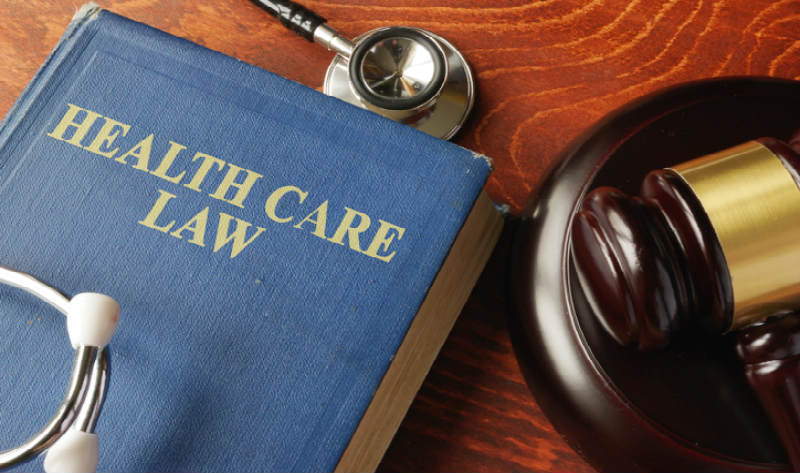This is the branch of law that deals with the field of health care which includes fighting for the rights of patients and caregivers. Health laws became intimate in the medical field in the 20th century. They are used to make patients and caregivers committed to their goals which drives action. It is the legal framework for health.
Medical Card: Medical marijuana card is an identification card used by patients to enter medical dispensaries & buy the plant to treat their health problems.
Uses of health law
- Health laws are used to implement health policies
- To build good governance
- To enable a good relationship between international countries
- To establish essential health laws
- To manage risks to personal health and the country’s health security
- For mutual agreement between neighboring countries
- To establish health care organizations and networks
- For accountability
There are areas of law the health law comprises of. They are;
- Public health law
- Pharmaceutical law
- Medical law
- Consent
- Medical Malpractice
1.) Public health law is a form of health policy that generates its concept from health care, law, medicine, etc. It provides public health practitioners with the legal basis for their field of practice.
Theodore H. Tulchinsky MD, MPH, Elena A. Varavikova MD, MPH, Ph.D., in The New Public Health (Third Edition), 2014 said Public health law is scattered through many legislative statutes and administrative documents which developed historically. Efforts to codify public health law may contribute to greater understanding and enforceability of the many separate pieces of legislation (Box 15.10).
2.) Medical law: This is the body of law in charge of the rights and responsibilities of medical professionals and patients. The areas of medical laws include negligence, confidentiality, criminal law, and ethics, etc.
Medical practitioners have to be confidential with their patients, meaning whatever is discussed in the course of diagnosis or treatment between patients and doctors has to be between them unless the patient expresses any form of violence towards himself or the doctor.
3.) Pharmaceutical laws: are defined as the “combination of legal, administrative and technical measures that governments take to ensure the safety, efficacy, and quality of medicines”. They are related to the sale and distribution of pharmaceutical drugs and it is used to protect the right of drug manufacturers’ research, safety and to protect the public from harmful side effects. Most of the drugs often pass through Food and Drug Administration (FDA) and other health organizations before they are allowed in the market.
4.) Consent: This means the patients must permit receiving any type of medical treatment, examination, or test in a hospital. This is an important aspect of medical ethics and human rights law. The consent of a patient is important regardless of the procedure of treatment. If the patient cannot give their consent about the treatment, the health care professionals treating them can give them the treatment needed while having the patient’s best interest at heart. Consent can be given in words by speaking or by writing.
5.) Medical Malpractice: This law rules the liability of medical practitioners and other professionals when harm is caused to their patients while they give the treatment carelessly. A doctor will be held responsible and accountable if he/she fails to meet the standard of care provided by other doctors in the same situation. Errors that can be termed medical malpractice include misinterpretation of x-rays, failure to diagnose a patient’s condition, failure to warn a patient about the side-effects of a drug or a procedure, performing services without the patient’s consent, prescription of the wrong drug, a mistake during surgery, etc.
Health laws are rules that help to structure what health individuals and organizations dos and don’ts are and the punishment accorded to anyone who goes against the law.
Medical Laws include;
- Children’s Health Insurance Program(CHIP)
- Health Care Quality and Improvement Act of 1986 (HCQIA)
- Anti-Kickback Act of 1986
- Hospital Readmissions Reduction Program (HRRP)
- Patient Safety and Quality Improvement Act(PSQIA) of 2005
- Emergency Medical Treatment and Active Labor Act (EMTALA)
- Stark Law or Physician Self-Referral Law
- Genetic Information Non-discrimination Act (GINA)
- Health Information Technology For Economic and Clinical Health (HITECH) Act of 2009
- False Claims Acts
Health care laws include:
- Healthcare is human, Capture the narratives
- Market definition of healthcare matters
- Engage with your customers and ultimately the end patients
- Prepare for slow sales and iteration cycles
- Services save lives, the software saves time
- Make regulations an asset not a liability
- Build for a web-based world
- Diverse, multilingual teams win, etc.

